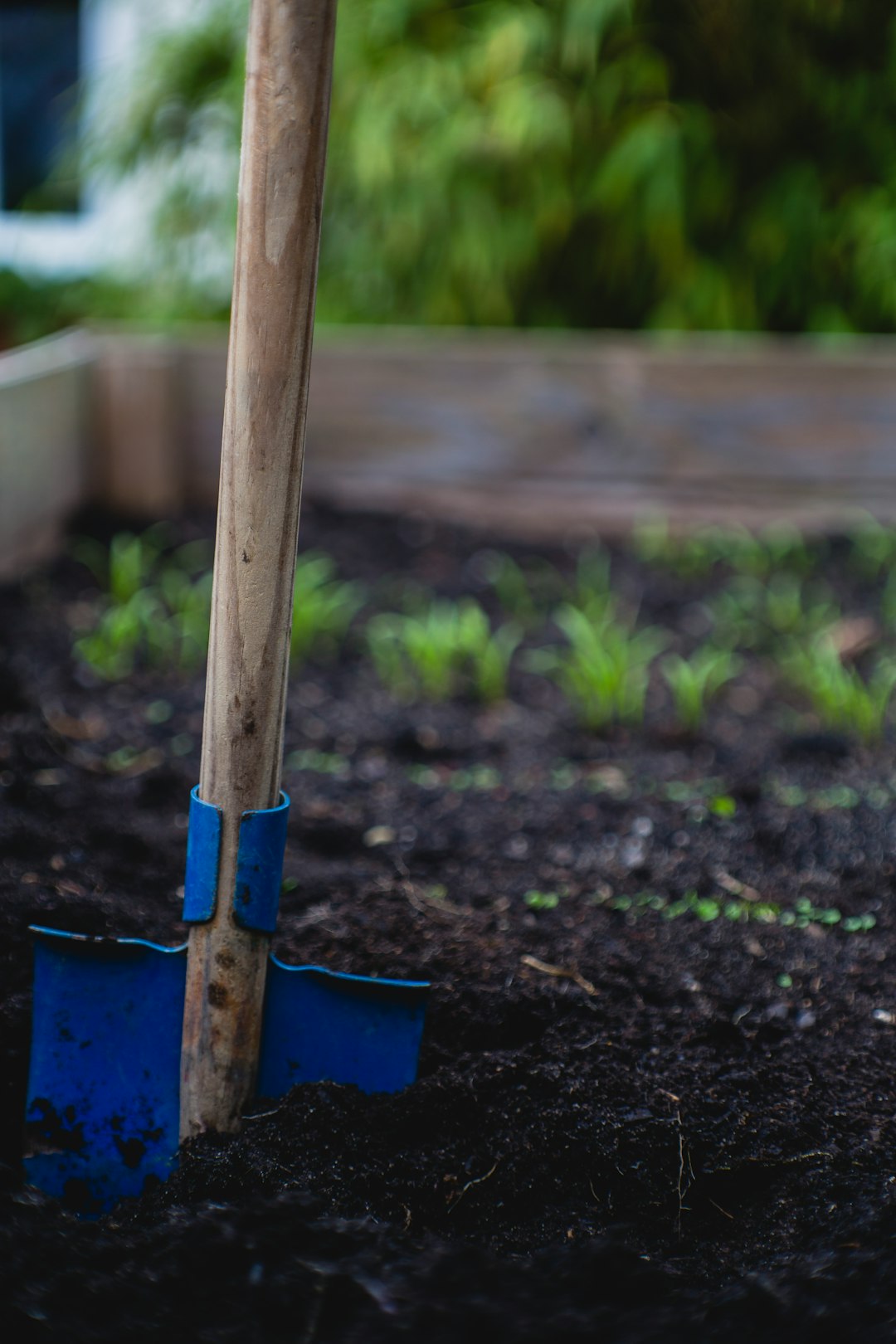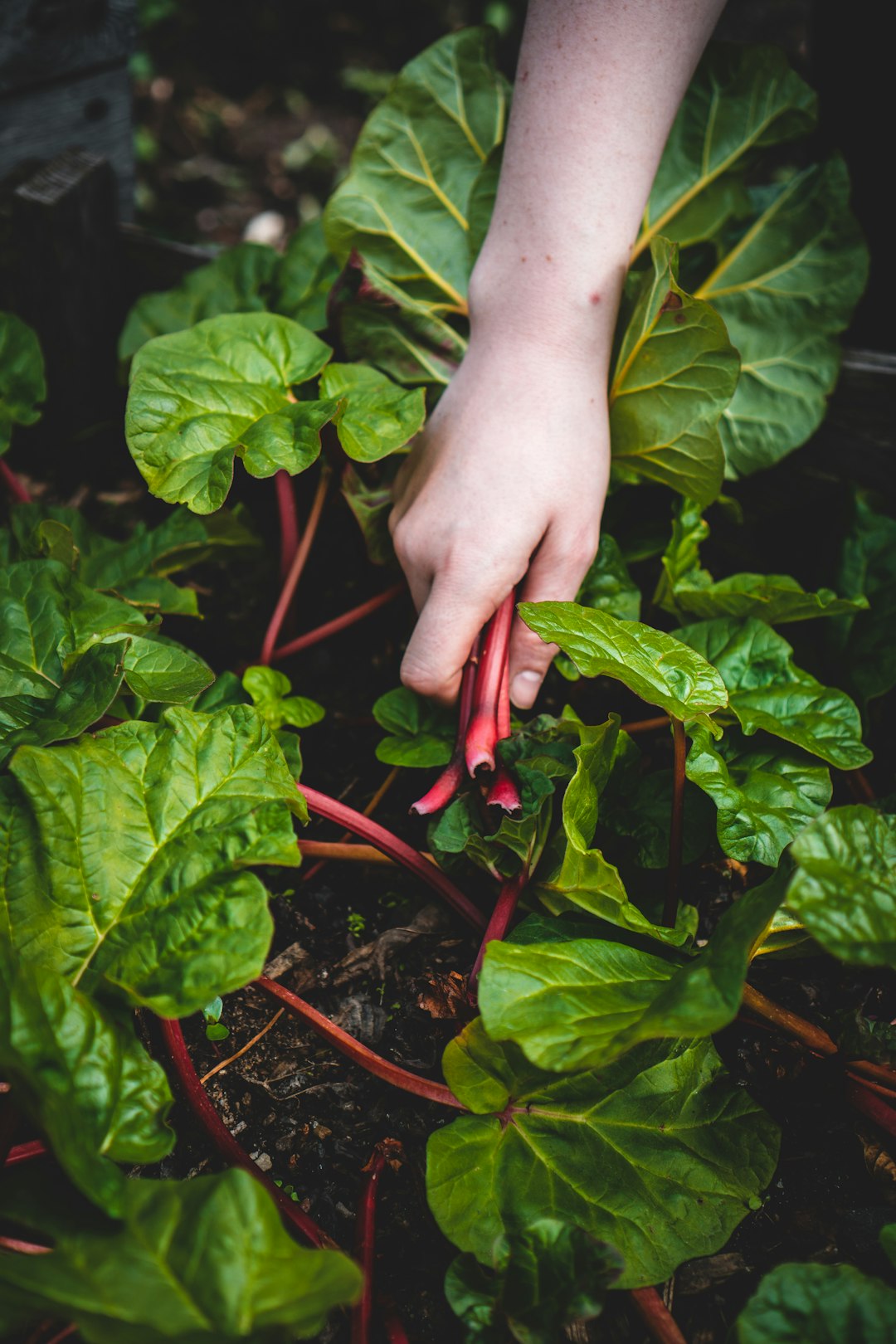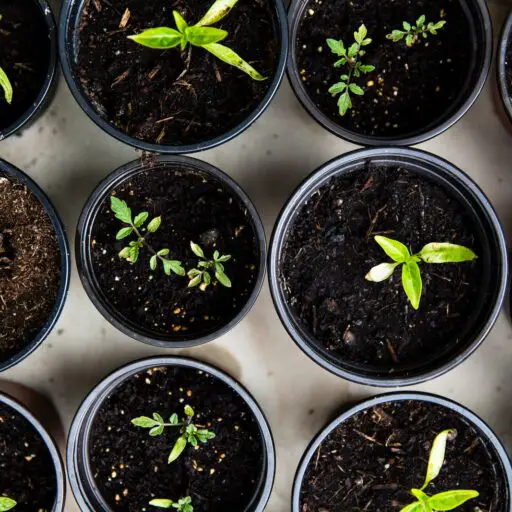Support our educational content for free when you purchase through links on our site. Learn more
Have you ever wondered how a simple patch of land can transform a neighborhood? Community gardens are not just about growing vegetables; they’re vibrant spaces where friendships blossom, skills are shared, and communities thrive. Imagine stepping into a lush garden filled with the laughter of neighbors, the scent of fresh herbs, and the promise of homegrown produce. In this article, we’ll explore the essence of community gardens, their rich history, and the 10 incredible benefits they bring to our lives. Plus, we’ll share practical tips on how to start your own community garden and make a difference in your community!
Did you know that community gardens can improve mental health and reduce stress? According to studies, spending time in green spaces can lead to increased happiness and well-being. So, if you’re looking for a way to connect with your neighbors and enjoy the great outdoors, keep reading to uncover how you can dig into this rewarding experience!
Key Takeaways
- Community gardens foster social connections and strengthen community bonds.
- They provide access to fresh, healthy food, promoting better nutrition.
- Community gardens serve as educational spaces, teaching gardening skills and sustainable practices.
- They contribute to environmental sustainability by promoting biodiversity and reducing carbon footprints.
- Starting a community garden involves gathering support, finding a location, and developing a plan.
- Join the movement and explore tools and supplies to kickstart your gardening journey! Check out essential gardening tools like gardening gloves and hand trowels to get started!
Table of Contents
Quick Tips and Facts
Understanding Community Gardens: Definition and Purpose
The Rich History of Community Gardens
Types of Community Gardens: A Diverse Palette
Benefits of Community Gardens: Growing Together
How to Start Your Own Community Garden: A Step-by-Step Guide
Essential Tools and Supplies for Community Gardening
Community Garden Success Stories: Inspiration from Around the World
Challenges and Solutions in Community Gardening
Government Support and Resources for Community Gardens
Search from Vocabulary: Key Terms in Community Gardening
Concept Information: The Philosophy Behind Community Gardening
Conclusion
Recommended Links
FAQ
Reference Links
Quick Tips and Facts
Want to dive into the wonderful world of community gardens? Here’s a quick taste of what you need to know:
- Community gardens bring people together. 🌱🤝 They’re vibrant spaces where neighbors connect, share skills, and grow fresh food together. It’s about more than just gardening – it’s about community!
- You don’t need to be an expert to join! 🧑🌾👩🌾 Many community gardens welcome gardeners of all levels, from seasoned pros to absolute beginners.
- Fresh, local produce is just one of the perks. 🍅🥬🥕 Community gardens offer a bounty of benefits, including improved health, reduced stress, and a stronger connection to nature. Unlocking 20 Surprising Benefits of a Community Garden 🌱 2025 at https://www.community-gardening.org/what-are-the-potential-benefits-of-a-community-garden/ .
- Ready to get your hands dirty? 🧤 Search for community gardens in your area and discover the joy of growing together!
Understanding Community Gardens: Definition and Purpose
So, what exactly is a community garden? 🤔 In a nutshell, it’s a shared piece of land where people come together to grow food, flowers, and friendships! 🌻 It’s a place where neighbors become friends, green thumbs flourish, and communities blossom.
What Makes a Community Garden Tick?
- Shared Space: Community gardens can pop up in parks, vacant lots, or even rooftops! The key is that it’s a designated area where members have permission to garden.
- Collective Effort: While some gardens offer individual plots, the heart of a community garden lies in collaboration. Members often share tools, resources, and knowledge to support each other’s gardening journeys.
- Community Focus: More than just a place to grow food, community gardens serve as vibrant hubs for social interaction, education, and community building.
The Rich History of Community Gardens

Community gardens aren’t a new fad – they have a rich and fascinating history dating back centuries! 🌿 Let’s dig into the past and uncover the roots of this timeless tradition:
Ancient Origins:
- Evidence suggests that community gardening practices existed in ancient Egypt, Mesopotamia, and China. These early gardens were often tied to religious practices or served as a means of providing food security during times of scarcity.
The Rise of Allotment Gardens:
- In Europe, the concept of “allotment gardens” emerged during the Industrial Revolution. These small plots of land provided factory workers with a space to grow their own food and find respite from the harsh realities of urban life.
Wartime Victory Gardens:
- During World War I and II, “Victory Gardens” sprouted up across North America and Europe. These gardens encouraged citizens to grow their own food, reducing pressure on the public food supply and boosting morale during wartime.
The Modern Community Garden Movement:
- The 1970s witnessed a resurgence of community gardening, fueled by concerns about food security, environmentalism, and social justice. Today, community gardens continue to flourish as spaces for community building, education, and promoting sustainable living.
Types of Community Gardens: A Diverse Palette
Just like the plants they cultivate, community gardens come in all shapes and sizes! 🌻🌳 Here’s a peek at some of the diverse types of community gardens you might encounter:
1. Neighborhood Gardens:
- These gardens are often found in residential areas, providing a green oasis for local residents to connect and grow food together. Plot sizes and membership fees can vary, but the emphasis is on community involvement and shared resources.
2. School Gardens:
- School gardens offer a hands-on learning environment for students of all ages. From seed to harvest, children gain valuable knowledge about plants, nutrition, and the environment.
3. Senior Gardens:
- Senior gardens provide a welcoming space for older adults to engage in gardening, socialize, and stay active. These gardens often feature raised beds and accessible pathways to accommodate varying physical abilities.
4. Therapeutic Gardens:
- Therapeutic gardens are designed to promote healing and well-being. Used in hospitals, rehabilitation centers, and community centers, these gardens offer a tranquil space for individuals to connect with nature and improve their mental and physical health.
5. Urban Farms:
- Urban farms take community gardening to the next level, transforming vacant lots and rooftops into productive agricultural spaces. These gardens often focus on sustainable farming practices and provide fresh, local produce to the surrounding community.
Benefits of Community Gardens: Growing Together
Community gardens offer a bounty of benefits that extend far beyond the garden gate! 🌻🤝 Let’s explore the many ways these green spaces enrich our lives and communities:
1. Access to Fresh, Healthy Food:
- One of the most tangible benefits of community gardens is access to fresh, nutritious produce. For families facing food insecurity, community gardens can provide a vital source of healthy food options.
2. Environmental Stewardship:
- Community gardens promote sustainable practices that benefit the environment. From composting to water conservation, these gardens serve as living classrooms for eco-conscious living.
3. Community Building and Social Connection:
- Community gardens are vibrant social hubs where people from all walks of life come together. They foster a sense of belonging, reduce social isolation, and strengthen community bonds.
4. Physical and Mental Well-being:
- Gardening is good for the body and mind! It provides a great workout, reduces stress, and promotes relaxation. Studies have shown that spending time in nature can improve mood, boost creativity, and enhance cognitive function.
5. Educational Opportunities:
- Community gardens are living classrooms! They offer hands-on learning experiences for people of all ages, from basic gardening techniques to advanced permaculture principles.
How to Start Your Own Community Garden: A Step-by-Step Guide
Inspired to start a community garden in your neighborhood? It’s a rewarding endeavor that can bring people together and transform your community! 🌻🤝 Here’s a step-by-step guide to get you started:
1. Gather Community Support:
- Talk to your neighbors, friends, and local organizations to gauge interest and build a team of passionate individuals.
2. Find a Location:
- Scout potential locations, considering factors like sunlight, soil quality, water access, and accessibility. Contact your city or town to inquire about permits and regulations.
3. Develop a Plan:
- Create a garden plan that outlines the garden’s layout, plot sizes, membership fees (if any), and rules and regulations.
4. Secure Funding and Resources:
- Explore funding options, such as grants, donations, or crowdfunding. Gather tools, seeds, and other gardening supplies.
5. Build and Plant:
- Prepare the garden beds, install pathways, and start planting! Consider hosting a community planting day to bring everyone together.
6. Maintain and Celebrate:
- Establish a regular maintenance schedule and assign tasks to volunteers. Host events and celebrations to foster community spirit and enjoy the fruits of your labor!
Essential Tools and Supplies for Community Gardening
Ready to get your hands dirty in the community garden? 🧤 Here’s a list of essential tools and supplies to make your gardening experience a success:
Basic Gardening Tools:
- Gardening Gloves: Protect your hands from thorns, blisters, and dirt.
- Hand Trowel: Perfect for digging small holes, transplanting seedlings, and weeding.
- Hand Rake: Ideal for smoothing soil, removing debris, and spreading mulch.
- Watering Can or Hose: Essential for keeping your plants hydrated.
Additional Supplies:
- Seeds or Seedlings: Choose a variety of vegetables, herbs, and flowers that thrive in your climate.
- Soil and Amendments: Ensure your plants have nutrient-rich soil to grow in.
- Mulch: Helps retain moisture, suppress weeds, and regulate soil temperature.
- Pest and Disease Control: Be prepared to protect your plants from unwanted visitors.
Community Garden Success Stories: Inspiration from Around the World
Community gardens are blossoming all over the globe, transforming communities and inspiring change! 🌻🌎 Let’s travel the world and explore some heartwarming success stories:
1. The Edible Bus Stop in London:
- Imagine waiting for the bus surrounded by fresh herbs and vegetables! That’s the reality at this innovative community garden in London, where a bus stop has been transformed into a vibrant edible garden.
2. The Rooftop Gardens of Chicago:
- Chicago is leading the way in urban agriculture with its abundance of rooftop gardens. These green oases provide fresh produce, reduce the urban heat island effect, and create a sense of community in the heart of the city.
3. The Food Forest in Seattle:
- Seattle’s Beacon Food Forest is a shining example of community-led permaculture. This seven-acre edible forest provides free food for all, fosters biodiversity, and offers educational opportunities for the community.
Challenges and Solutions in Community Gardening
While community gardens offer a bounty of benefits, they also come with their own set of challenges. Let’s explore some common obstacles and practical solutions:
1. Funding and Resources:
- Challenge: Securing funding for tools, supplies, and infrastructure can be a barrier for community gardens.
- Solutions: Explore grant opportunities, host fundraising events, or partner with local businesses for sponsorships.
2. Water Access:
- Challenge: Reliable water access is crucial for a thriving garden, but can be an issue in some locations.
- Solutions: Install rain barrels to collect rainwater, advocate for city water access, or explore alternative irrigation methods like drip irrigation.
3. Pests and Diseases:
- Challenge: Unwanted pests and diseases can damage crops and reduce yields.
- Solutions: Implement integrated pest management strategies, encourage beneficial insects, and practice crop rotation.
4. Community Engagement:
- Challenge: Maintaining consistent community involvement and volunteer support can be challenging.
- Solutions: Host regular events, create a welcoming atmosphere, and clearly communicate the garden’s mission and impact.
Government Support and Resources for Community Gardens
Did you know that governments around the world are recognizing the value of community gardens and offering support? 🌻🤝 Here are some ways governments are fostering the growth of these green spaces:
1. Funding Programs:
- Many governments offer grants and funding programs specifically for community gardens. These funds can help cover startup costs, infrastructure improvements, and educational initiatives.
2. Land Allocation:
- Cities and towns are increasingly allocating vacant lots and public land for community garden use. This provides accessible spaces for residents to garden and strengthens the urban fabric.
3. Policy Support:
- Governments are implementing policies that support community gardening, such as zoning regulations that permit urban agriculture and tax incentives for property owners who donate land for gardens.
Search from Vocabulary: Key Terms in Community Gardening
Want to sound like a seasoned community gardener? 🌱📚 Here are some key terms to add to your vocabulary:
- Companion Planting: Growing different plants together that benefit each other, such as deterring pests or attracting pollinators.
- Crop Rotation: Rotating crops each season to improve soil health, reduce pest pressure, and prevent disease.
- Compost: Decomposed organic matter that enriches the soil and reduces waste.
- Mulch: A protective layer of material spread over the soil to retain moisture, suppress weeds, and regulate temperature.
- Permaculture: A design system that mimics natural ecosystems to create sustainable and self-sufficient gardens.
Concept Information: The Philosophy Behind Community Gardening
Community gardening is more than just digging in the dirt – it’s a philosophy, a movement, a way of life! 🌻🤝 Here are some core principles that underpin this growing movement:
1. Food Justice:
- Community gardens strive to increase access to fresh, healthy food for all, regardless of income or background. They challenge systemic inequities in the food system and promote food sovereignty.
2. Environmental Sustainability:
- Community gardens embrace eco-conscious practices that protect and regenerate the environment. They promote biodiversity, conserve water, reduce waste, and build healthy soil.
3. Community Empowerment:
- Community gardens empower individuals and communities by providing a space for learning, sharing, and collective action. They foster a sense of belonging, strengthen social connections, and build resilience.
Conclusion

Community gardens are more than just patches of green; they are vibrant ecosystems that foster community spirit, promote sustainability, and provide fresh produce. 🌱✨ Whether you’re a seasoned gardener or just starting out, the benefits of participating in a community garden are immense. From improving mental health to creating lasting friendships, these gardens truly enrich our lives.
As we’ve explored, starting a community garden involves gathering support, finding a suitable location, and engaging with your community. The journey may come with challenges, but the rewards are well worth it! So, if you’re inspired to dig in and grow together, now is the perfect time to get started!
In summary, community gardens:
- Positives: Foster community connections, provide fresh food, promote environmental sustainability, and offer educational opportunities.
- Negatives: Can face challenges such as funding, water access, and maintaining community engagement.
We wholeheartedly recommend diving into the world of community gardening! 🌻🤝
Recommended Links
- Gardening Gloves: Amazon | Walmart | Etsy
- Hand Trowel: Amazon | Walmart | Etsy
- Hand Rake: Amazon | Walmart | Etsy
- Watering Can: Amazon | Walmart | Etsy
- Books on Community Gardening: Community Gardening: A Handbook for Beginners | The Community Garden Handbook
FAQ

What are the benefits of participating in a community garden?
Community gardens offer numerous benefits, including access to fresh produce, opportunities for social interaction, and a sense of belonging. They also promote physical activity, mental well-being, and environmental stewardship. By participating, you can learn gardening skills, connect with your neighbors, and contribute to local food security.
Read more about “Unlocking 20 Surprising Benefits of a Community Garden 🌱 …”
How do I find a community garden near me?
To find a community garden in your area, check local gardening clubs, community centers, or city websites. Online platforms like American Community Gardening Association can also help you locate gardens and connect with fellow gardeners.
What are the rules and regulations of a community garden?
Rules and regulations vary by garden, but common guidelines include plot maintenance, shared responsibilities, and respectful behavior toward fellow gardeners. It’s essential to review the garden’s bylaws and participate in meetings to stay informed.
Read more about “What Are the 10 Hidden Disadvantages of Community Gardens? 🌱”
How can I start a community garden in my neighborhood?
Starting a community garden involves gathering support from neighbors, finding a suitable location, and developing a garden plan. Engage with local authorities for permits, secure funding, and establish a maintenance schedule. Hosting community events can also help build interest and involvement.
Read more about “How Does a Community Garden Work? 🌱 12 Essential Insights You Need to Know!”
What types of plants can I grow in a community garden?
You can grow a variety of plants in a community garden, including vegetables, herbs, and flowers. Choose plants that thrive in your climate and consider companion planting to maximize space and yield. Always check with fellow gardeners for preferences and shared goals.
Read more about “What Makes a Community Garden Successful? 7 Essential Factors 🌱”
How do community gardens contribute to sustainable living and environmental conservation?
Community gardens promote sustainable practices such as composting, organic gardening, and biodiversity. They help reduce carbon footprints by providing local food sources, conserving water, and improving soil health. These gardens also educate community members about eco-friendly practices.
What are some tips for maintaining a successful community garden?
To maintain a successful community garden, establish a regular maintenance schedule, assign tasks to members, and encourage open communication. Host workshops and events to foster learning and engagement, and celebrate successes together!
Read more about “How to Start a Community Garden at School: 9 Essential Steps 🌱 …”
Can I grow organic produce in a community garden?
Yes! Many community gardens encourage organic gardening practices. Check with your garden’s rules and guidelines to ensure compliance with organic methods, and share resources with fellow gardeners to promote healthy growing practices.
Read more about “Are Community Gardens Successful? 🌱 Discover 10 Reasons They Thrive in 2025!”
How can community gardens foster social connections and community engagement?
Community gardens create spaces for social interaction, collaboration, and skill-sharing. By working together, gardeners build friendships, share experiences, and strengthen community ties. Events, potlucks, and workshops further enhance engagement and connection.
Read more about “What is the Value of a Community Garden? Discover 12 Incredible Benefits! 🌱”
What are some creative ways to use community garden spaces for events and activities?
Community gardens can host a variety of events, such as workshops, cooking demonstrations, and seasonal celebrations. Consider organizing potlucks, movie nights, or educational seminars to engage the community and promote gardening skills.

